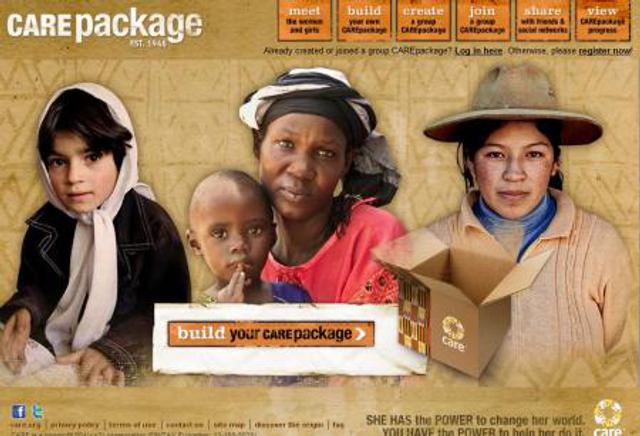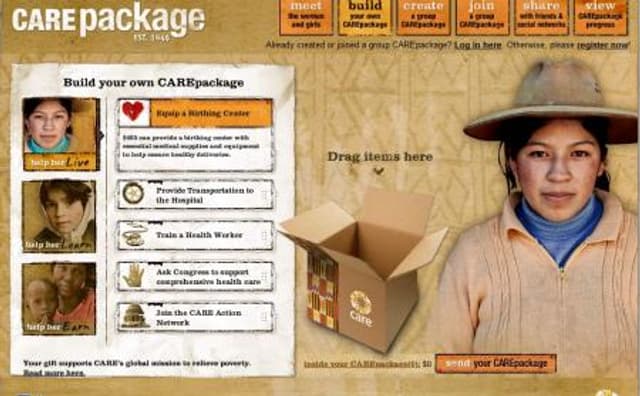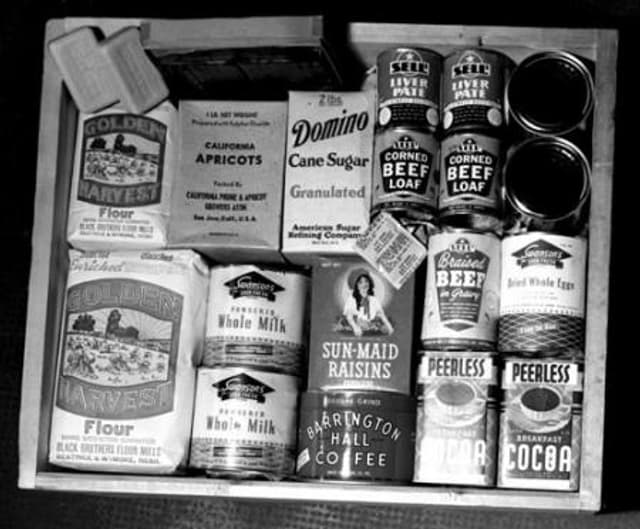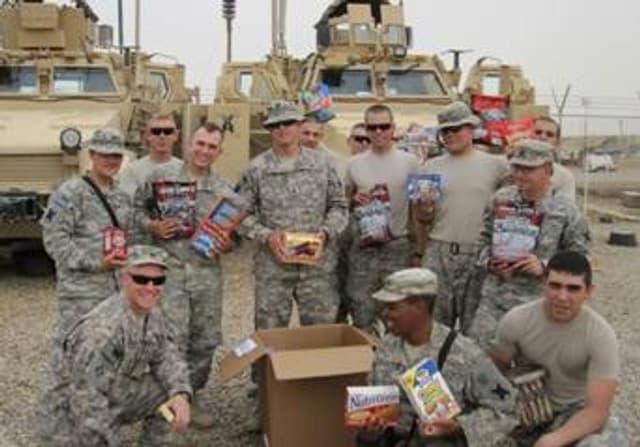CARE packages: returning to their roots
- Exhibited by
- CARE
- Added
- April 04, 2011
- Medium of Communication
- Online.
- Target Audience
- Awareness, individuals, single gift.
- Type of Charity
- International relief/development.
- Country of Origin
- USA.
- Date of first appearance
- 1946.
SOFII’s view
Here at SOFII, we are always telling you to steal ideas from fundraising’s history and make them work for your own organisation. However, in this exhibit, CARE looked back at their own history and decided to launch a new and improved version of their traditional CARE packages that were first introduced in 1946. Updated with a modern twist, this campaign demonstrates the future of online giving – by offering significant donor choice and maximum transparency.
Summary / objectives
CARE is a leading humanitarian organisation fighting global poverty in more than 70 countries around the world. This latest campaign encourages donors to send CARE packages to help woman and girls around the world to access the education and resources to live, learn, earn and escape poverty for good.
Background
CARE was founded at the end of WWII when 22 American organisations (called the Cooperative for American Remittances to Europe) came together to provide life-saving CARE packages for survivors of the war. The first 20,000 CARE packages, containing items such as potted meats, sugar, powdered milk, eggs, coffee and margarine arrive in Harve in France on 11 May 1946. Over the next two decades, over 100 million more packages reached other people in need, first in Europe and then throughout the rest of the world.
In the 1960’s and 1970’s, the organisation decided to dispense with CARE packages and instead focused their efforts on larger development projects and disaster relief operations.
However, CARE is now reclaiming their history but with a 21st century twist.
‘I came to understand that this was a part of our history that we weren’t making optimum use of,’ said Helene D. Gayle, chief executive of CARE. ‘They meant so much to the people who received them after the war and we hope that the new CARE package will have the same impact on the people we help today’.
Special characteristics
The new CARE package campaign was launched in March 2011. A special CARE package microsite was launched which encourages donors to pick a recipient whose needs are described. You can then fill a ‘virtual box’ with projects that will be financed through your contributions. For example, you could help to cover the costs of emergency transportation for women in rural areas to a health clinic or hospital or you could contribute to the training of local health workers in obstetrics.
Donors also have the option of making a partial gift for a service and inviting family, friends and colleagues to add another virtual box.
A range of donations can be made and a project shopping list makes it clear what your donation will achieve. The microsite also encourages supporters to take further action such as asking the US Congress to support a comprehensive healthcare plan.
Influence / impact
The CARE package microsite is impressive in its transparency. Donors can easily track the progress of the campaign, how much has been donated to each project and the donations of various groups which have joined together to collectively fund projects around the world. At the time of writing this exhibit, in the first month of the campaign, the total number of donations is $ 23,170 and the total number of CARE packages that have been sent out is 325. Updated results can be found here. The website also includes a clear donation breakdown for each project.
Merits
This exhibit shows how old ideas can be effectively recycled and rebranded to strengthen a cause and to appeal to new donors. This campaign also offers an impressive amount of donor choice and boasts remarkable transparency – donors are easily able to track the progress of the appeal and how their gift has helped to make a difference.
Other relevant information
Click here to read the story of Mr and Mrs Edie who claim their 60 year long marriage is all because of a CARE package.
Final notes
The first CARE packages were sent to France in 1946. The new version of the CARE package campaign was launched in March 2011.
 View original image
View original image
 View original image
View original image
 View original image
View original image
 View original image
View original image
 View original image
View original image
Also in Categories
-





















